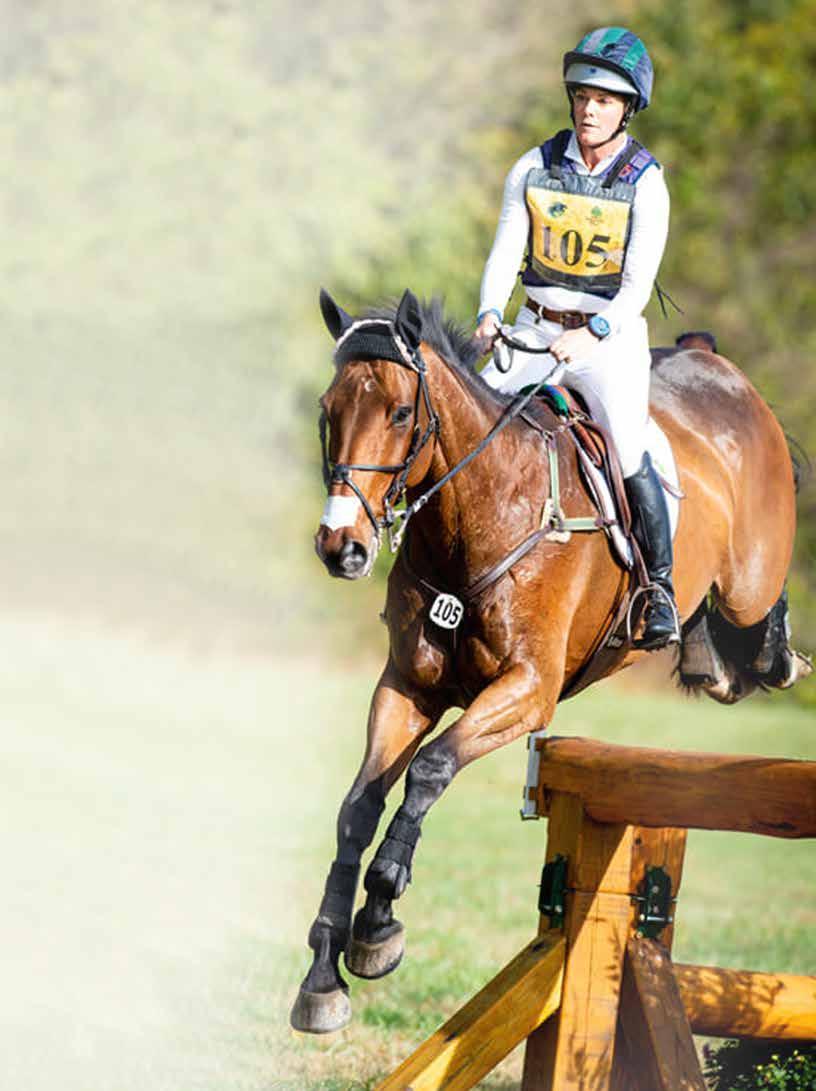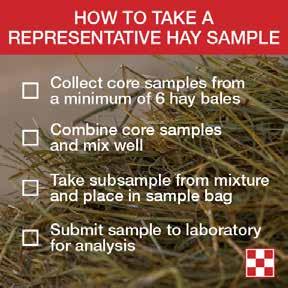
5 minute read
Using Antibody Titers in Vaccine-Averse Cases
By Paul Basilio
A well-managed horse receives a lot of antigens.
Advertisement
Between tetanus, Eastern and Western equine encephalomyelitis (EEE/WEE), rabies, West Nile virus, influenza, equine herpes virus-1 (EHV-1) and EHV4, and whatever risk- and region-based vaccines is indicated, the number of vaccine antigens that a horse Shutterstock/Roman Zaiets is exposed to can be even greater than the number dogs receive.
While AAEP guidelines and vaccine data sheets must be followed to ensure that a horse is properly vaccinated, an increasing number of owners express concern at the frequency and number of vaccines their horses receive, particularly with horses that have experienced an adverse reaction in the past.
The decision to use a particular vaccine is based on an assessment of risk versus benefit, but if a client questions the necessity of a particular vaccine, measuring antibody titers might provide useful information on which to base the decision to either go ahead and vaccinate now or delay until a later date, according to W. David Wilson, BVMS, MS, Hon DACVIM, Department of Medicine and Epidemiology, School of Veterinary Medicine, UC Davis.
“I have been asked many times by horse owners and veterinarians, ‘if we vaccinate dogs against rabies every 3 years why do we need to vaccinate horses every year?’” Dr. Wilson said. “For tetanus, we revaccinate horses every year, whereas the interval in people often extends to 10 years, depending on the risk.”
Horses typically have excellent responses to rabies and tetanus vaccines. If local reactions do occur, nonsteroidal anti-inflammatory drugs (NSAIDs) and hot or cold packs can help. For local or systemic reactions, switching to a vaccine with a different adjuvant in the future might do the trick.
“At the end of the day, we have to look at the risk and consequences of infection vs. the risk and consequences of a vaccine reaction,” he explained here at the 65th Annual AAEP Convention in Denver. “Under those circumstances, a good approach may be to assess the immune status of the horse and re-vaccinate based on what we hope is a good correlate, or measure, of protection.”
At this point, measuring antibodies in serum is the most feasible way to test the immune status of a horse, even though it does not assess all aspects of the immune response. For some diseases, antibody levels are good predictors of protection, whereas for others they are not.
Tetanus
Tetanus is a potent antigen in horses, and antibody levels do correlate with protection. A level of >0.01 IU/mL is considered to be protective, and it persists for more than 1 year after a 2-dose primary series in horses older than 6 months of age.
After the third dose, protective levels can persist from between 2 years to more than 10 years, depending on the horse, he said.
“Once the booster is administered, tetanus has a prolonged duration of immunity [DOI] that used to be measured via mouse inoculation test,” he said. “Thankfully, the Cornell Animal Health Diagnostic Center now has a toxin-binding ELISA that gives us an opportunity to measure tetanus antibodies. There is a stall-side test in Germany…that can determine whether it’s a good idea to administer a booster during an examination or whether the horse can wait a year or more. I have no experience with the stall-side test, but I find it intriguing.”
EEE/WEE and West Nile
Correlates of protection against EEE/WEE are not well established, but circulating virus antibodies likely play a role, because infection is acquired by vascular injection due to a mosquito bite, according to Dr. Wilson. Current inactivated vaccines appear too efficacious if administered as recommended.
“For EEE/WEE and West Nile virus, revaccination based on antibody titers is not recommended,” Dr. Wilson said. “Boosters are still required annually—especially with EEE, where it is every 6 months or so in the Southeastern US where the risk is high year-round.”
A positive serum plaque reduction neutralization test (PRNT) titer against EEE or WEE provides evidence that the horse has been previously infected with, or vaccinated against, the pathogens, but the magnitude of the titer does not reliably predict protection, he said. The test is available through the National Veterinary Service Laboratory (NVSL) in Ames, IA.
“The lab does not report a specific titer, but 3 ranges (<10, 10 to 100, and >100),” he explained. “A titer less than 10 means that the animal is likely susceptible, but that’s not based on a lot of controlled research.”
A horse with a PRNT titer of >100 is unlikely to be susceptible. PRNT titers for WNV follow a similar pattern.
“I wouldn't necessarily use this to guide vaccination, except in horses that had low titers and in horses that reacted adversely to vaccination in the past,” Dr. Wilson added.
Rabies
“The primary rationale for vaccination of horses against rabies is protection of human health and other public health reasons,” he said. “The secondary rationale is protection of horses against this low-incidence disease.”
Thanks to vaccination, rabies is rare. Of the more than 9 million horses and donkeys in the United States; 13 rabid horses and donkeys were reported to the CDC in 2018, which is similar to the number reported in 2017. In 2019, rabies was found in a horse in New Jersey and all of the people who handled the horse required post-exposure prophylaxis.
Like tetanus, the inactivated rabies vaccine is a potent antigen in horses. There is an excellent serologic response after primary vaccination, although a few horses appear to be non-responders.
Maternal antibody interference (interference of the vaccine response of the foal due to antibodies passed from the dam in colostrum) is also profound with rabies, which can present a dilemma for those veterinarians who follow the label.
“The label states that the vaccine is for healthy horses 3 months of age or older,” Dr. Wilson noted. “Maternal antibody interference lasts at least 6 months. I wouldn’t be rushing to vaccinate foals against rabies until they’re at least 6 months of age. At that age they usually develop a robust response that results in prolonged level of antibodies following booster vaccination within the following year.”
Although a specific level of antibody that confers protection in horses has not been defined, a level 0.5 IU/mL works well as the threshold in humans and dogs. It is likely similar in horses, he said.
In a recent JAVMA-published study, Dr. Wilson and colleagues found that revaccination of previously vaccinated, non-pregnant horses, resulted in titers that persisted above the 0.5 IU/mL threshold for at least 2 to 3 years.
“This antibody lasts a long time,” he said.
He did caution, however, that even though the titers may present 1 side of the story, horses that are vaccinated for rabies less often than once yearly are not considered to be properly vaccinated from a public health standpoint.
“If that horse bites a person and the public health authorities are notified as they should be,” he said, “then that horse will likely be quarantined.”
For More Information
Harvey AM, Watson JL, Brault, et al. Duration of serum antibody response to rabies vaccination in horses. J Am Vet Med Assoc. 2016 Aug 15;249(4):411-8. doi: 10.2460/javma.249.4.411. PMID: 27479286 https://avmajournals.avma.org/doi/full/10.2460/javma.249.4.411?url_ver=Z39.88-2003&rfr_id=ori:rid:crossref.org&rfr_dat=cr_pub%20%200pubmed






